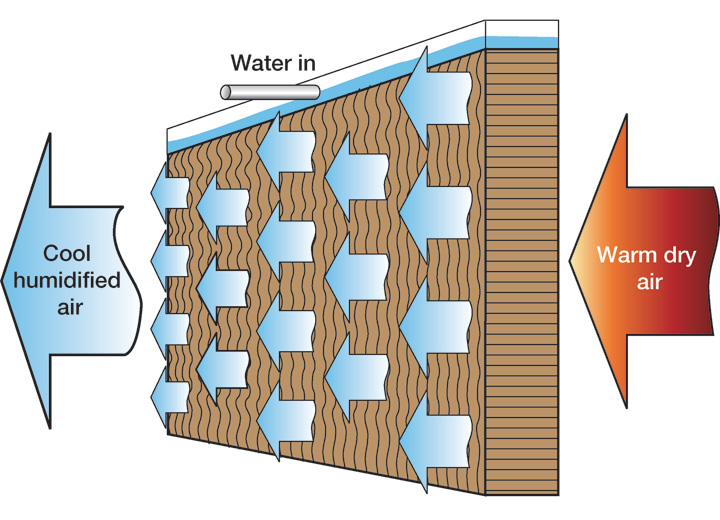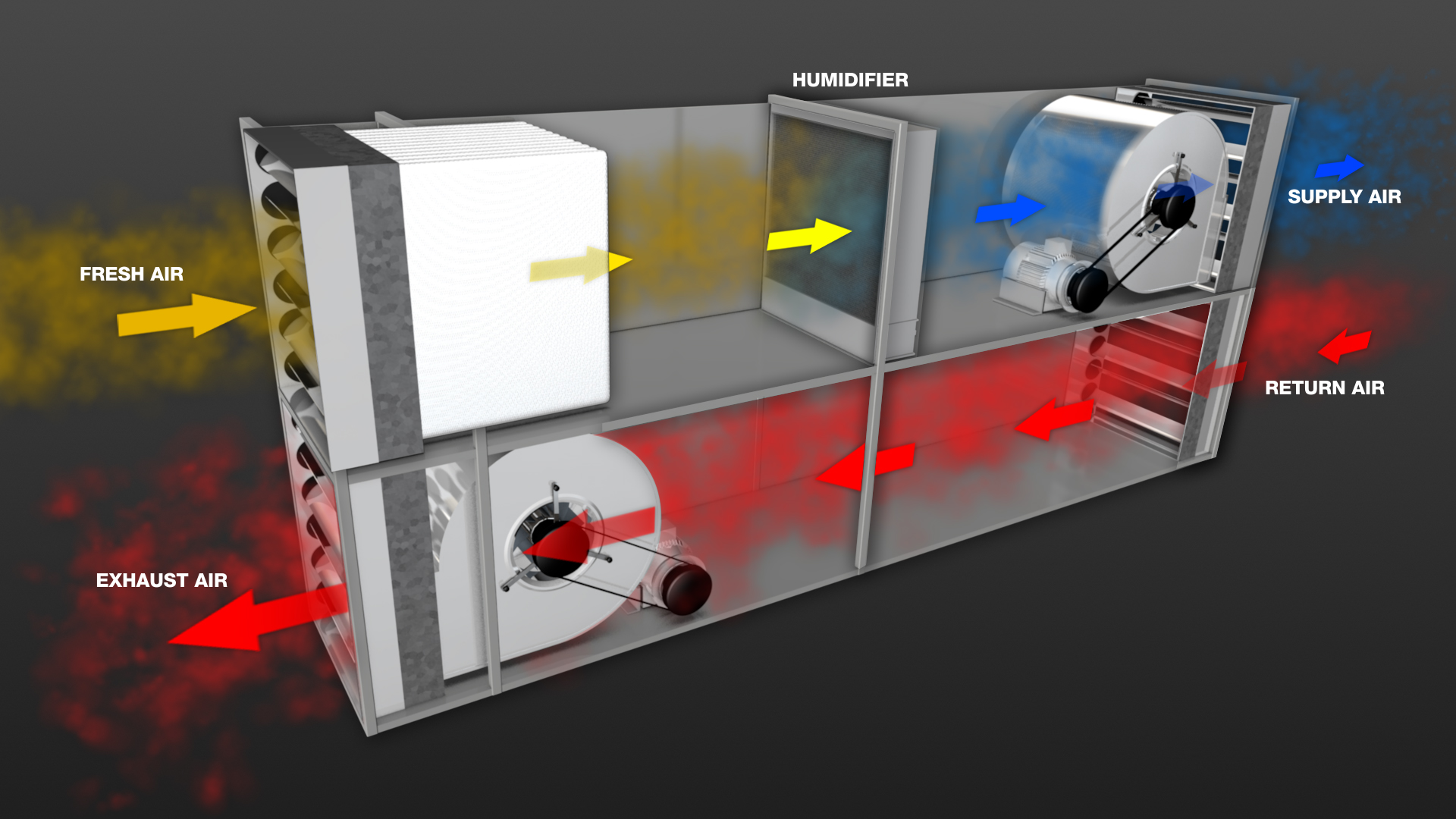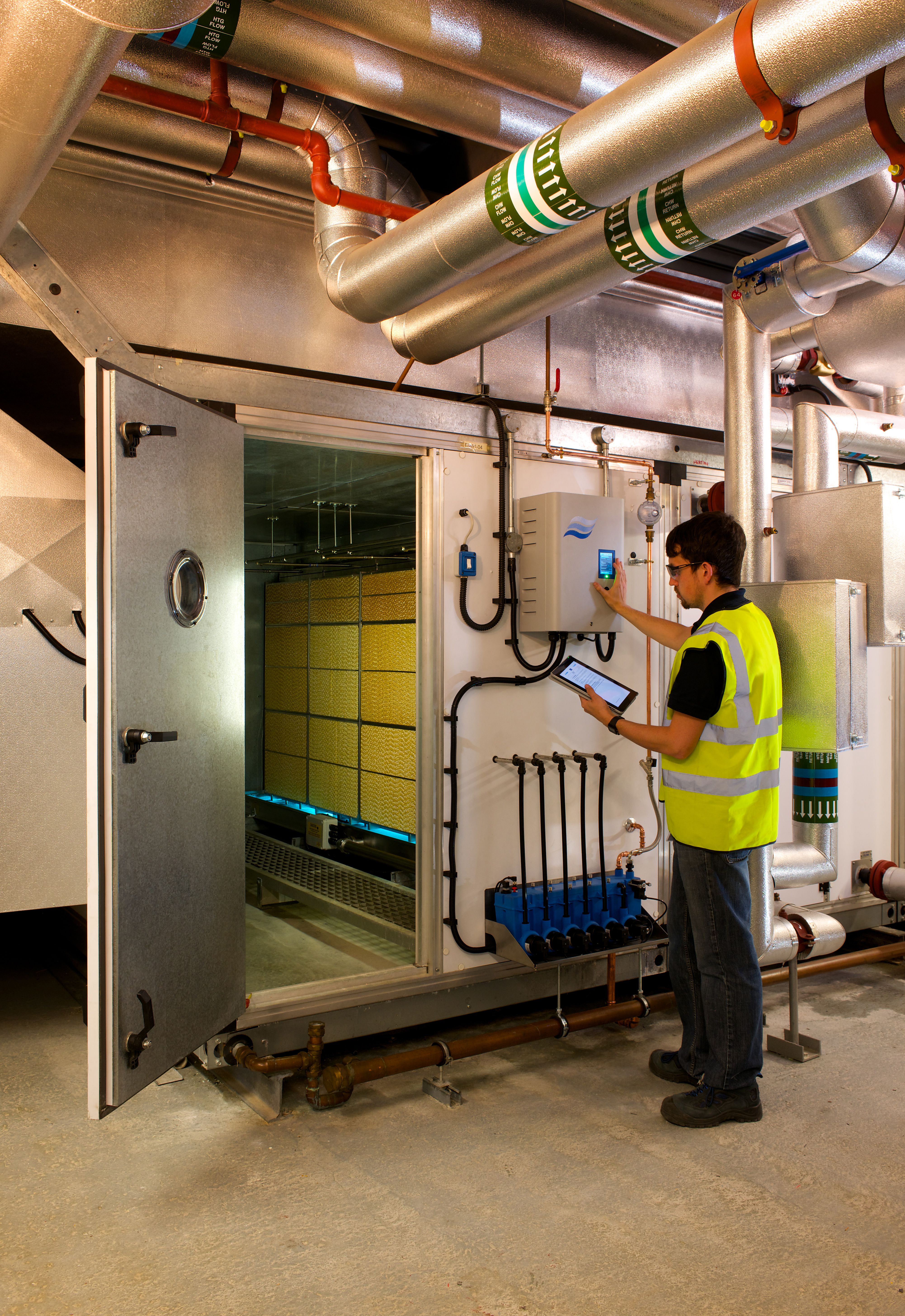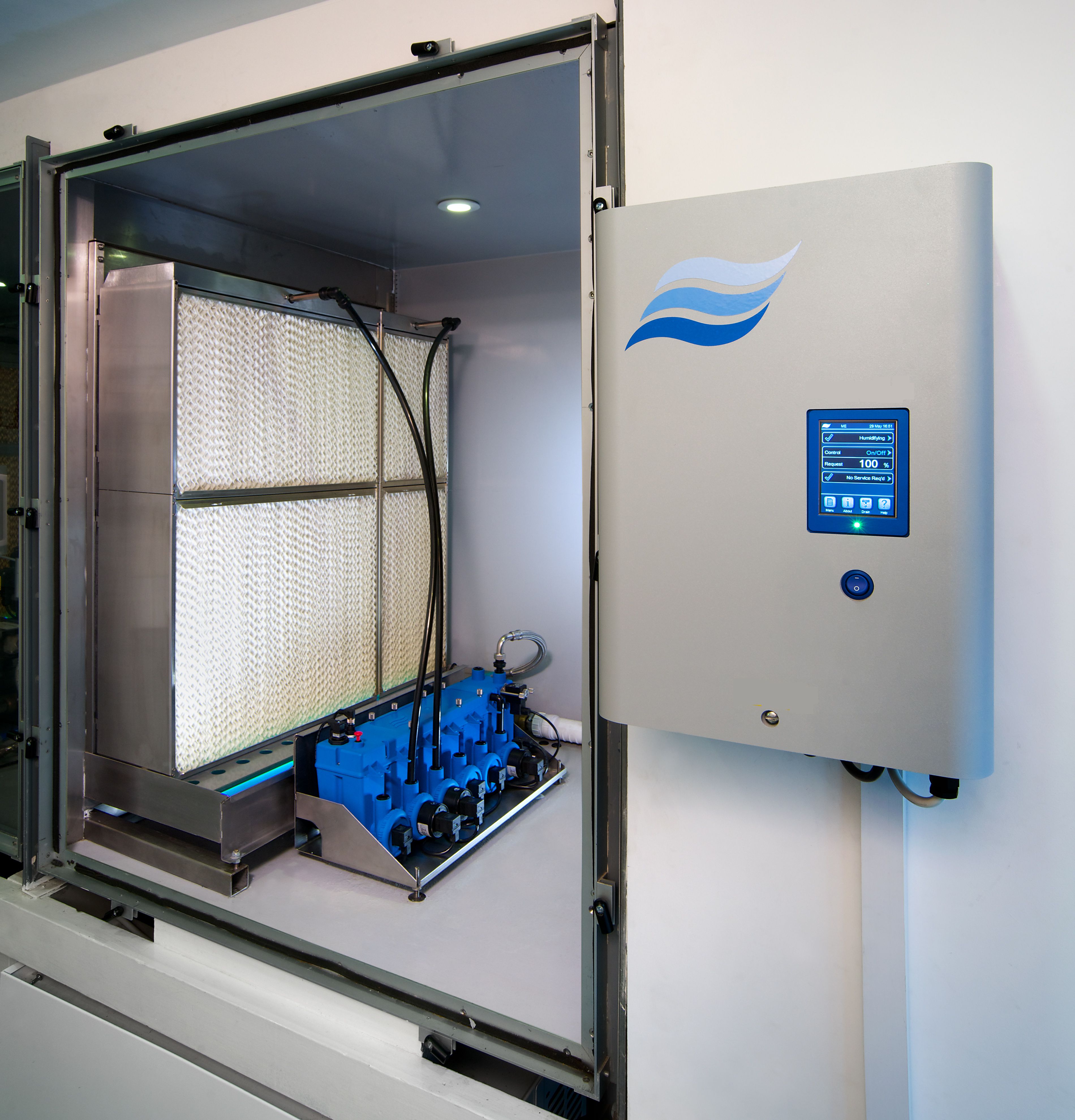04.12.2018
Your Guide to Evaporative Cooling and Energy Savings
For commercial entities and industrial facilities, evaporative cooling forms an integral pillar supporting continued business efficiency, output, worker satisfaction and wellness, and greater energy savings resulting in cost-effectiveness. By using an evaporative cooling system, it becomes easier and more seamless to maintain the desired temperature and relative humidity (RH) settings that best suit the application in question. This leads to better atmospheric control, enabling for occupants to be more productive, healthier, and therefore make their work environments more efficient and cost-effective. Above all else, evaporative cooling implementation can help reduce the need for energy consumption. Here’s a deeper look at how evaporative cooling can result in greater energy savings.
The Adiabatic Cooling Process
To first understand the significant energy savings a commercial evaporative cooler system can bring, it is first a good idea to consider the functionality of adiabatic cooling, the direct evaporative cooling process. This typically involves reducing the heat in an interior space through the alteration of air pressure, which is caused by volume expansion. Therefore, the dry bulb temperature is lowered without changing the amount of heat in the air. Important elements to consider are the air temperature prior to evaporation as well as the relative humidity (RH), largely due to the fact that warm air can hold more moisture than cold air and it is important to retain that heat to make a major difference with a commercial evaporative cooler or similar system. Additionally, the more water the air already contains, the less humidity it can absorb, and this will result in a less significant alteration in temperature during the process.
What is an Evaporative Cooling System?
As touched on in greater detail in a previous blog post, a commercial evaporative cooler utilizes the adiabatic cooling process to optimize air temperature and maintain it at consistent pre-determined settings by the user. There are three varieties, the first of which is known as direct or in-duct evaporative cooling and filters outside air into a room using the system. Alternatively, indirect evaporative cooling solutions refer to the exhaust and fresh air connections with an evaporative humidifier, such as those made by Condair, which produces clean air while recovering heat energy. Finally, there is exhaust air evaporative cooling, where the air extracted from an indoor area is first cooled by a humidification system before being filtered through an HR unit before being vented outside. The cool thermal energy from the humidifier is then transferred to the incoming air stream by the HR unit, reducing the load needed on air conditioning systems and helping to keep environments cooler by a few degrees more. Regardless of which variant of this cooling solution you may choose, the end result remains the same: Clean, clear air that is fresh and consistently maintained at optimal levels. With Condair commercial evaporative cooler-based humidification systems, a carefully engineered evaporative media is designed using a unique corrugated pattern. This, in turn, allows for far more efficient relative humidity control and internal temperature management.
How Does Evaporative Cooling Reduce Energy Costs?
An evaporative cooling solution, combined with proper humidity control and a well-designed indoor environment, can help business owners with larger operations more efficiently manage their expenses by reducing the need for energy through a reliance on natural air evaporation as a means of lowering indoor temperatures – in a sense, the answer is right in the name. Specifically designed for higher load capacities, such systems as Condair cool mist humidifiers utilize adiabatic cooling processes similar to those in other commercial evaporative coolers to better optimize industrial and commercial applications such as paint spraying facilities, data centres, aerospace manufacturing divisions, office complexes and many others. It introduces fresh outdoor air to consistent moisture and disperses it directly into an environment in either an atomized or lightly sprayed form. This, in turn, allows for greater control of the relative humidity (RH) in an indoor environment and will therefore directly influence what the internal temperature of a building will remain at.
At Condair, we believe in helping business owners succeed with greater interior atmospheric control through our humidification systems, many of which incorporate adiabatic cooling capabilities to allow for a commercial evaporative cooler system combined with the benefits of proper humidity control. With evaporative cooling, you too can help save on energy bills and operating costs by maximizing the beneficial nature of the climate and conditions you operate in. Watch our latest webinar, Evaporative Cooling: The Secret to Lowering Energy Costs today or contact us for more details.
Similar Links:
https://www.condair.com/in-duct-evaporative-cooling
https://www.condair.com/humidifiernews/blog-overview/6-ways-to-use-evaporative-cooling




